-
Posts
27,746 -
Joined
-
Last visited
-
Days Won
340
Content Type
Profiles
Forums
Events
Posts posted by robcat2075
-
-
Lighting is a whole topic in itself. Perhaps if you brought a shot to LAT we could look at economical ways to light it better.
-
Merry Christmas, Yopp!
-
Happy Christmas wishes to everyone!
You can find me in this year's Trombone forum collaboration...
ccc
-
 1
1
-
-
To make an orthogonal camera that sees a 8.5 inch wide view we can use this equation
width in cm = 200 * (100/focal length)
or width = 20,000/focal length
Algebra leads us to this equation... focal length = 20,000/width
convert inches... 8.5" * 2.54 = 21.59cm
We want a view width of 21.59 cm
20,000/21.59 = 926.35
inputting a focal length of 926.35 into the orthogonal camera creates this view which does appear to be 8.5 inches wide
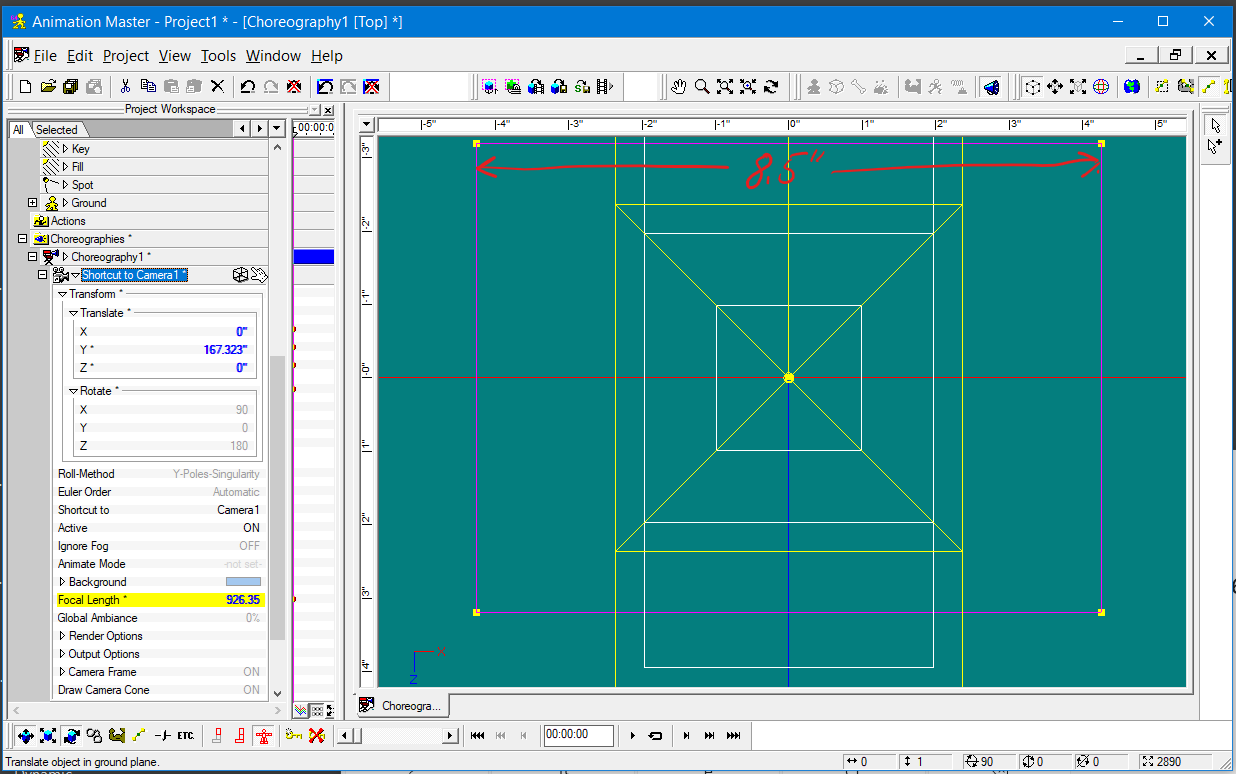
You can put any pixel resolution into the camera and it will not change the width of the view.. The focal length is what changes the width.
If you put in a 2550 pixels that will render the 8.5" wide view with 2550 pixels.
However... A:M tags all renders with a DPI of 72. You will need to take the A:M render into a photo app that can alter the document's DPI setting as shown above and set it to 300
-
What program are you printing from?
The DPI of your printer doesn't matter.
What matters is how many DPI your document believes itself to have.
Here are two JPGs printed out.
Both are 100 pixels wide but they print out at different sizes because they have different DPI information as part of the data stored in their JPG file format.
And I don't even know what the DPI of the printer is.
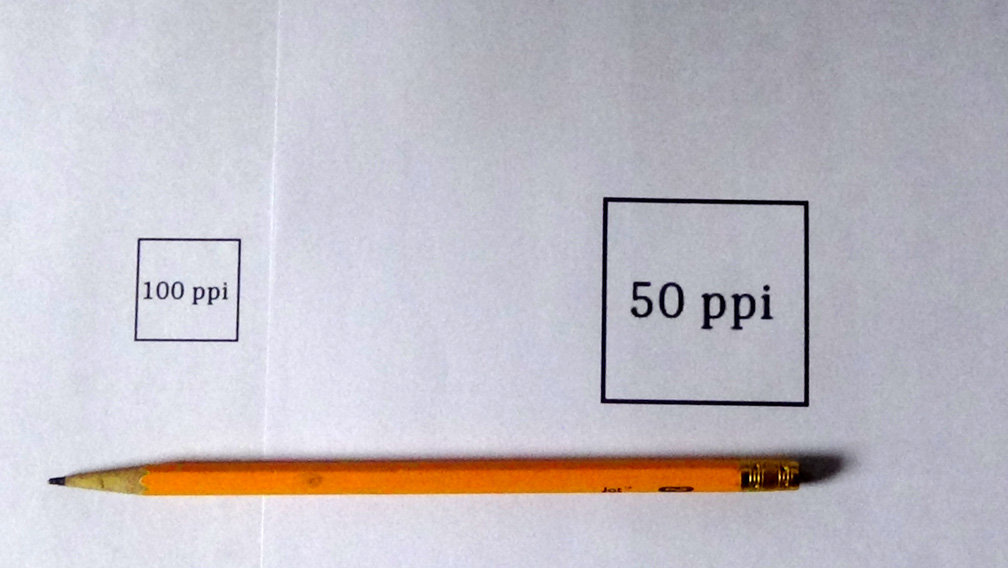
-
Kevin asks...
Quote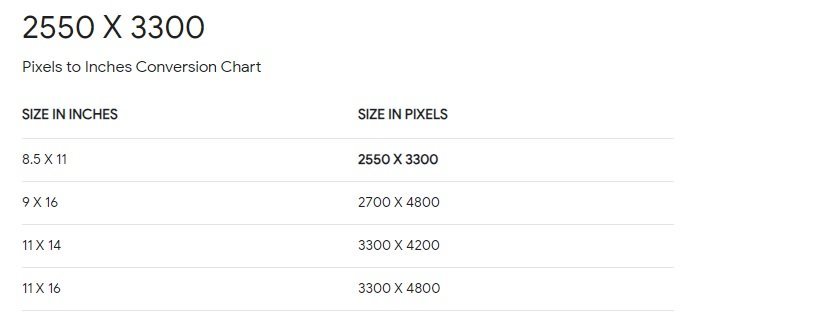
That chart presumes a standard of 300 dpi. But modern printers often do more... or less. The original Mac printer did 72 dpi? Laser printers do 1200 dpi and yet print 300dpi documents appropriately, without shrinking them to 1/4 their intended size.
That is why the document you are printing needs to contain its own dpi ( or ppi) data so the printer driver can interpolate your pixels to the printer's dots.
QuoteThe orthogonal camera set to "focal length" of 100 always sees a width of 200 cm (100cm on each side of the center) regardless of the "resolution" that is set.
2550 pixels spread across 200 cm is only 12.75 per cm or 32.385 pixels per inch.
More to come... -
The short answer will be to take the render from A:M into a photo app that can set the document's "pixels per inch" value such that the number of pixels in your image that represented one inch are now thought by the Photo app to be an inch's worth of space when you go to print.
In Photoshop the dialog looks like this. Notice that "Resample Image" is OFF. We do not want this operation to change any pixels.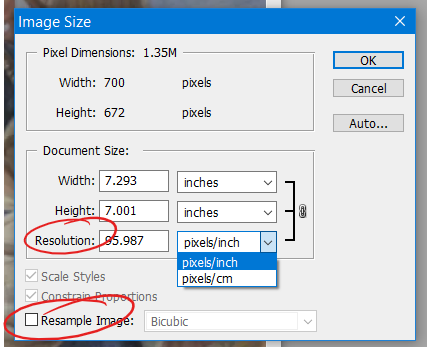
A:M can produce a render with a known number of pixels per centimeter of model space by shooting the object in a chor with a camera set to "orthogonal"
It turns out that an orthogonal camera set to ANY resolution where width and height are equal and has "Focal length" set to 100 will have a field of view that is 200 cm by 200 cm
I have not tested this but I believe that means the width in cm of the field of view will equal 200 * (100/focal length)
-
Do this...
-
4 minutes ago, Madfox said:
That was my second thought. But I am affraid I get another lightning outcome.
I don't know what that means.
The descriptions are not making sense.
Quotethe fifth part suddenly scrambles up to a 4/5 screen error.
I don't know what that means.
QuoteFirst I did a Netrendering with 7 cores for 13 seconds animation. This took 4:24:00. 2340 frames.
2340 frames? Something is seriously wrong.
13 seconds of animation at 30 fps should be 390 frames
At 25 fps (PAL) it will be 325 frames
At 24 fps (film) it will be 312 frames
I still don't understand what you are trying to do that isn't working
You have a sound track. You put it in animation:Master and made animation to match it. You rendered frames in NetRender.
Take the image sequence and your sound track to your video editing program and sync them together there. That is the standard way to do it.
-
Anonymous asks...
QuoteIs there a way to determine an exact angle in Hash? A 90 degree angle is straight up, but I'm thinking like 45 degree, or say.......37 degrees?
You can set exact angle in the bone's properties.
Combinations of X Y and Z can be confusing. It is best to work from bones that start from straight vertical or horizontal orientations.
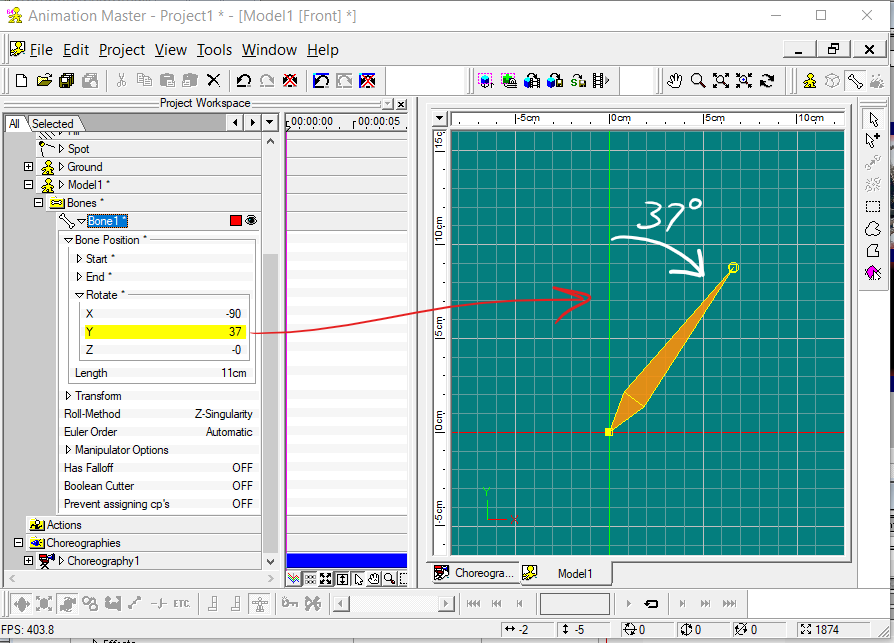
-
A:M can output an image sequence to AVI. That is not good enough?
-
On 12/17/2023 at 1:11 PM, Roger said:
This guy looks like a cast member from "The Ballad of Ricky Bobby":
It's hard to look cool in a pressure suit. 😀
-
I remember not liking the logotype when it came out but now it's so old it's new.
WaPo article about the history of the design:
QuoteDecades after sending it to design purgatory, the space agency celebrates a logo it still calls the worm.
-
Much improved with the hat!
-
If I download the DDS Viewer Program and convert the .dds file to .bmp, then alter the .mtl file to change the image link from .dds to .bmp, I get this.
It resembles a scrambled bitmap that has incorrect width and height stored
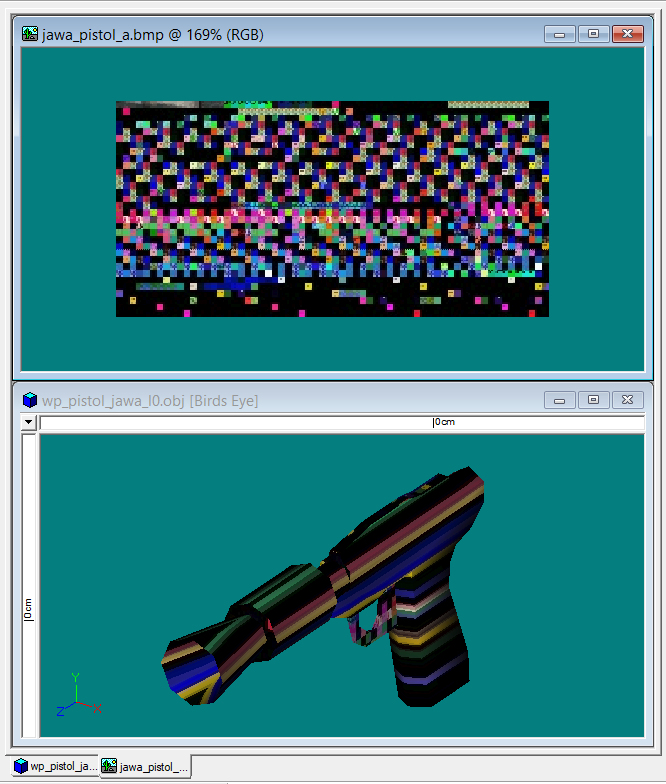
-
When you import an OBJ as a Prop it stays as polygons and you can't edit it, you can only use it in chors.
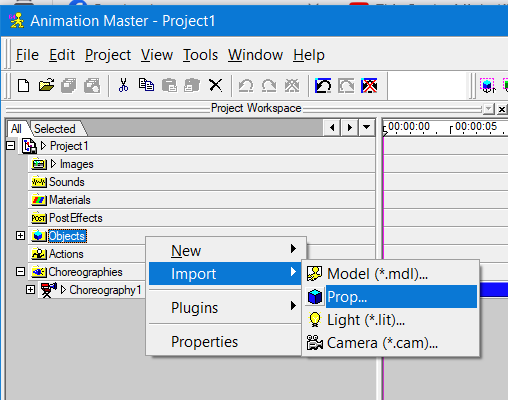
-
1 hour ago, Michael Brennan said:
Working for me, V19.5B
Thanks!
After a Windows update and a reboot, it's back for me too.
It's Christmas miracle!
-
 1
1
-
-
This is what I get from the two OBJs when I do Objects>Import>Prop
The top one looks whacked. I don't see a solution for it.
The bottom one is a triangle model, those will always look bad if converted to MDL . The texture image is in a weird MS .dds format. I don't know if it can be converted.
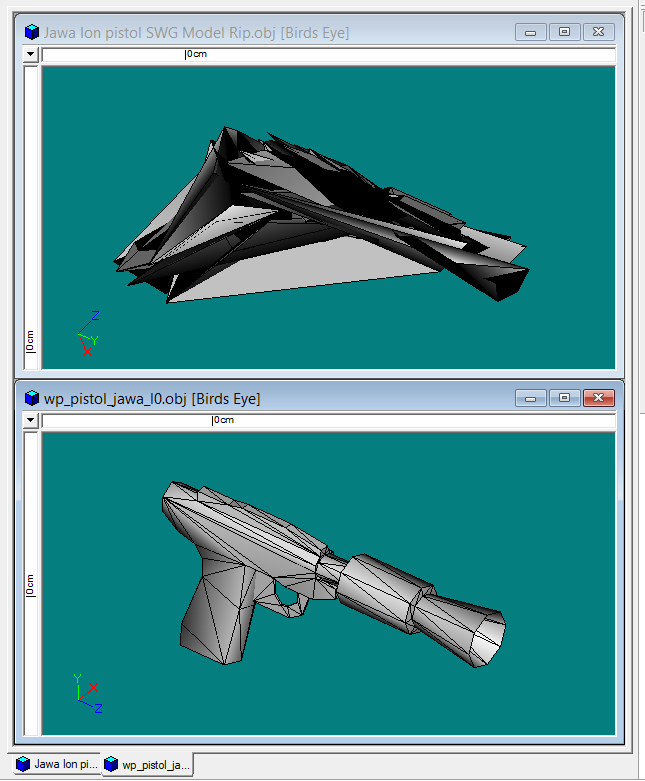
-
It used to be possible to click on the View Setting at the lower right corner of the interface and get this dialog...
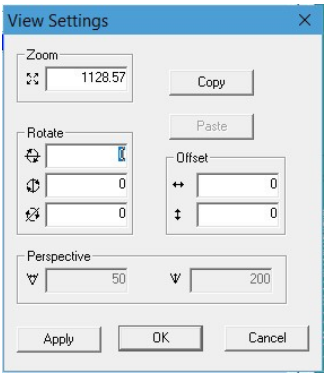
But now it doesn't work. And it doesn't work in previous versions of A:M either, although it did in the past.Does this happen for anyone else?
-
A promising deal on AliExpress: An 8TB(or 4TB? or 1TB?) SSD for just $1.05 from "SUMANG". 50% off!
But the watermark on the photo says "SAMSNUG".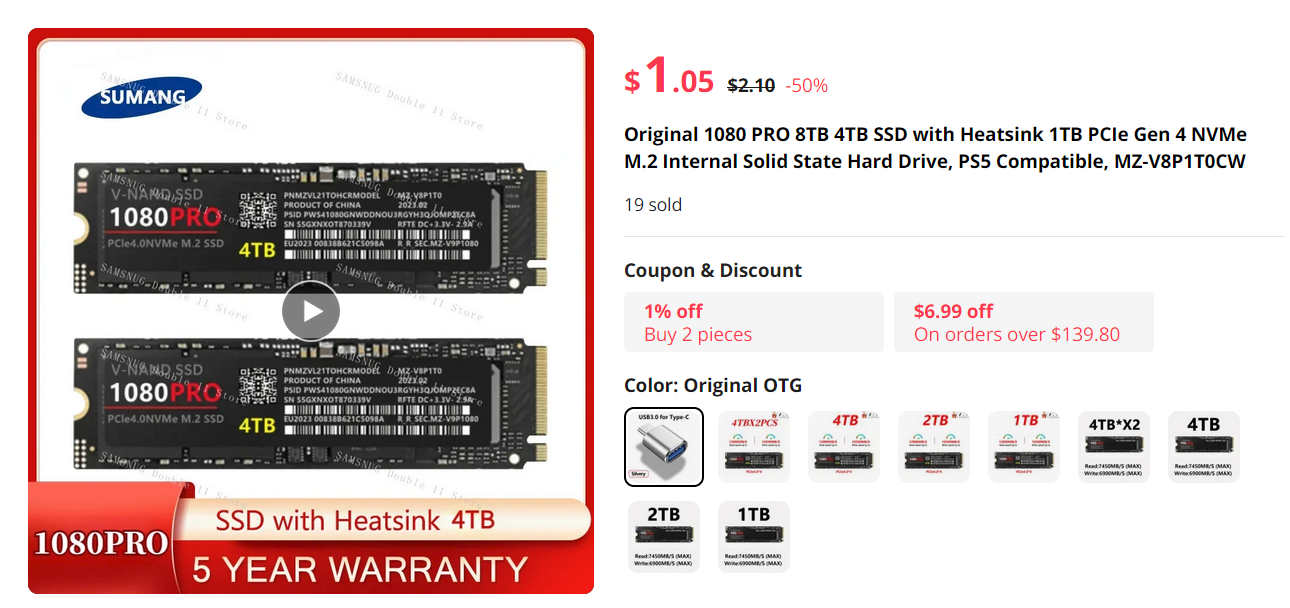
-
Beautiful tree, John!
-
Hi Tim,
I can't take on any substantial tasks right now, but perhaps another forum member might be interested.
In the mean time... there are several Live Answer Times that discuss CP weighting
Sept 12 2020
Sept 19 2020
Sept 26 2020
July 3 2021
Smart Skin is also mentioned
Oct 3 2020July 3 2021
You may find past Live Answer Times at Live Answer Time... less-live archived versions!
-
32 minutes ago, Tom said:
I rendered the project and the sprites were arrows. Open Gl rendered faster than Open Gl3....that's about it...
Not rendering. Real-time view. What you see when A:M is just sitting there displaying shaded mode.
-
Load SpriteAndCookieTest001.prj
SpriteTest.zip
How do the sprites appear in the real-time shaded view? Are they arrows or squares?How does the patch on the right appear? Arrow? Blank? Red square?
Does switching Tools>Options>Global>Real-time Driver change anything?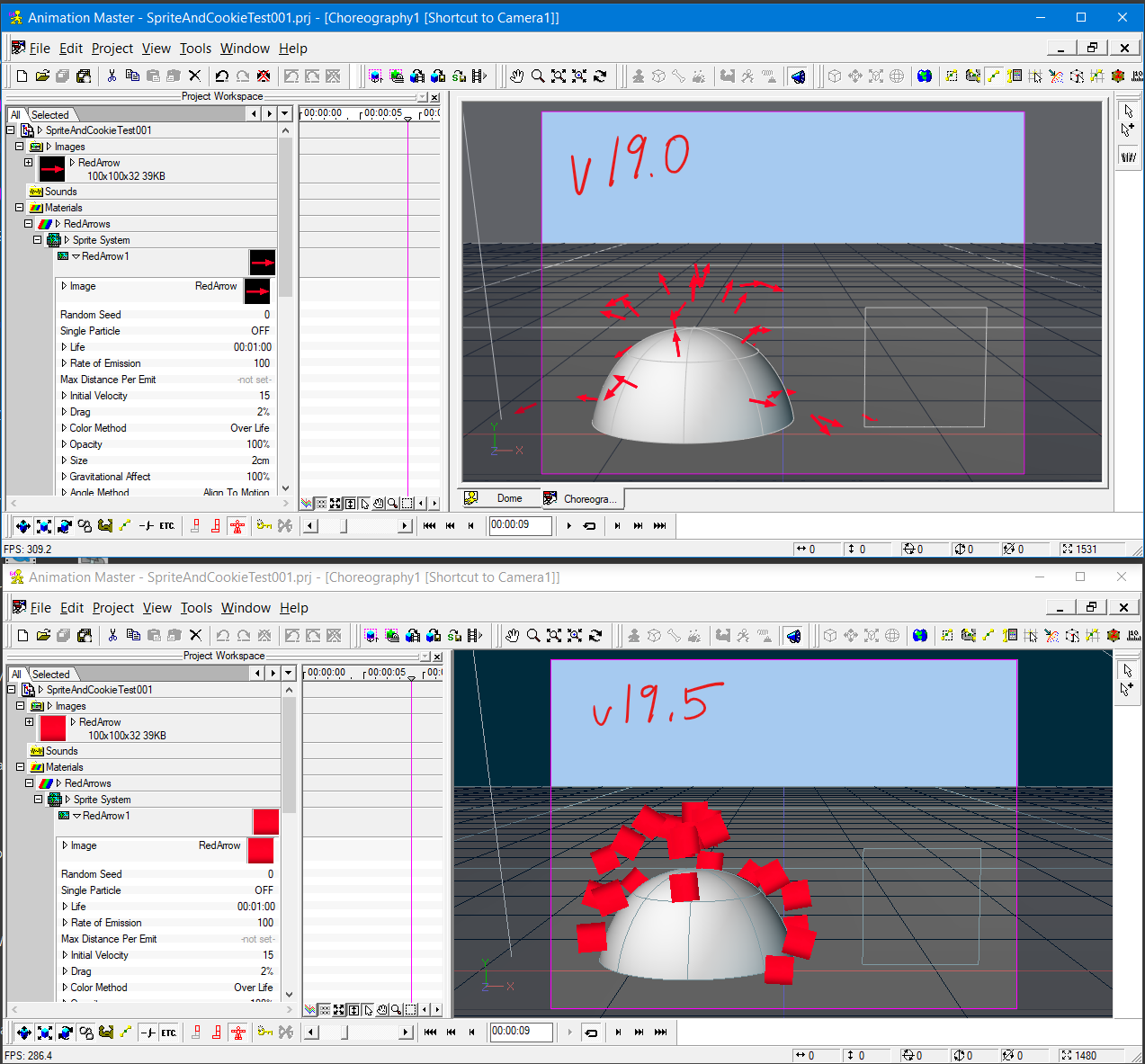



last xmas image
in Tinkering Gnome's Workshop
Posted
One more Merry Christmas, John!